LATEST NEWS
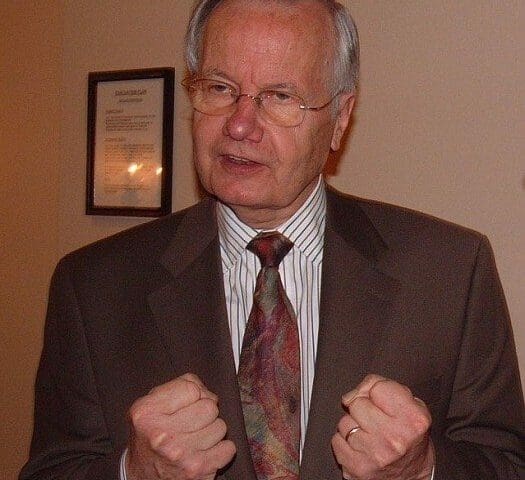

Bill Moyers, who turned 80 on Thursday, has been one of the most prolific and influential figures in American journalism. Not content just to diagnose and document corporate and political malpractice, Moyers has regularly taken his cameras and microphones to cities and towns where unions, community organizations, environmental groups, tenants rights activists and others were waging grassroots campaigns for change. Moyers has given them a voice. He has used TV as a tool to expose political and corporate wrongdoing and to tell stories about ordinary people working together for justice.
He has introduced America to great thinkers, activists and everyday heroes typically ignored by mainstream media. He has produced dozens of hard-hitting investigative documentaries uncovering corporate abuse of workers and consumers, the corrupting influence of money in politics, the dangers of the Religious Right, conservatives’ attacks on scientists over global warming and many other topics. A gifted storyteller, Moyers’ TV shows, speeches and magazine articles have roared with a combination of outrage and decency,
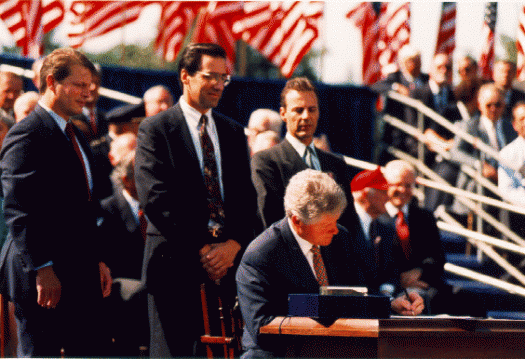

You have to be living in a cave to miss the brouhaha about French economist Thomas Piketty’s blockbuster Capital in the 21st Century. His book documents the widening gulf between the rich and the rest of us by examining tax rolls and other arcane data from before the last century in this country and Europe. He demonstrates conclusively that taxes on work are higher than taxes on wealth, playing a key role in creating and maintaining the gap.
That disparity was underscored again this month when the Los Angeles Business Journal published its list of the 50 richest in our region. According to the Journal the “aggregate net worth, adjusted for inflation” of the wealthiest half-a-hundred increased by $29 billion during the last five years. That includes four years of the Great Recession followed by disturbingly slow recovery, when huge unemployment rates kept a lot of people from sleeping.
» Read more about: Deliberately Unequal: Policy Choices at Inequality’s Roots »
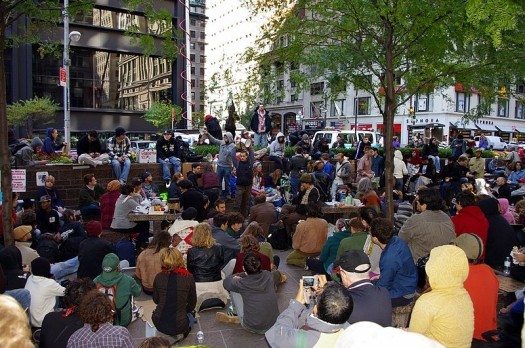

An idea that only a year ago appeared both radical and impractical has become a reality. On Monday, Seattle struck a blow against rising inequality when its City Council unanimously adopted a citywide minimum wage of $15 an hour, the highest in the nation.
This dramatic change in public policy is partly the result of changes brought about by last November’s Seattle municipal elections. But it is also the consequence of years of activism in Seattle and around the country. Now that Seattle has established a new standard, the pace of change is likely to accelerate quickly as activists and politicians elsewhere seek to capture the momentum. Five years from now, Americans may look back at this remarkable victory and wonder what all the fuss was about.
Seattle now joins a growing list of cities—including San Francisco, Santa Fe, Albuquerque, San Jose,
» Read more about: How Seattle’s $15 Minimum Wage Victory Began in Zuccotti Park »


The commission charged with accrediting California’s two-year community colleges convened its three-day semiannual meeting in Sacramento yesterday morning. Conspicuously absent from the public agenda, however, is any mention of the action that has brought down an unprecedented firestorm of controversy onto the publicity-shy agency — its disaccreditation of the state’s largest community college.
At least the Accrediting Commission for Community and Junior Colleges (ACCJC) hasn’t included the fate of City College of San Francisco (CCSF) on its schedule for Friday’s public portion of the meeting. What’s on the program for the first two days — the sessions when the agency makes its substantive findings and decisions — is anyone’s guess. That part of the meeting is conducted in secret.
What is now certain is that no 11th-hour reprieve from the school’s approaching date with de-accreditation will be forthcoming. Supporters of the embattled college had been holding out hope that the commission would use the meeting to announce an extension to the July 31 termination deadline it set for the school’s accreditation during last June’s secret sessions.
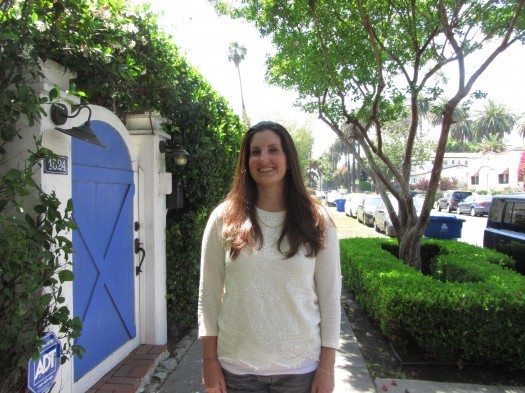

(They drive our trains and buses, teach our children, repair our roads and protect our safety. Public employees perform these and countless other jobs, although they remain mostly off the radar of the public they serve. Our Common Ground series takes us into the lives of these men and women.)
In a large lecture hall in the Biological Sciences Building of Cal State L.A., a student in the introductory anthropology class raised his hand to inquire as to whether or not female chimpanzees demonstrated the same sexual behaviors with each other that males did. “Not that it matters…” he remarked sheepishly. His question elicited giggles across the room while Dr. Jessica Bodoh-Creed shook her head knowledgably, visibly pleased with engagement of her students as she pointed out some key differences in male and female chimp behavior. With captivating energy, Dr. Bodoh-Creed continued her lecture on the behavioral patterns of chimpanzees with anecdotes and media to maintain active listening among her one hundred and forty students.
» Read more about: Dr. Jessica Bodoh-Creed: Adjunct for Now, Academic Forever »
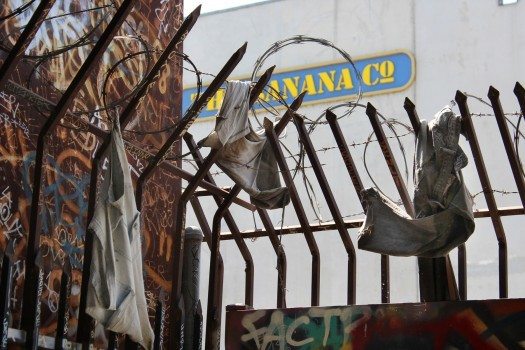

Read the Writing
Read the writing on the cinder block wall:
Joker, Jasper, Dopey, Termite, Tokes, Crow.
It’s not an “is it art?” debate, at all;
these are the monochromatic zip codes
of my gangster, tattooed, sharp-creased cousins.
Scribbled in black on a bus bench, strangled
names crossed out, over names crossed out again,
red under yellow under green tangled
like wire. Memo, Cowboy, Flyboy, Topper.
Neil Armstrong planted a flag on the moon;
it can’t be seen from their clearly marked world
where, if you don’t live there, you better run.
Tight fence of paint, like barbed wire that’s hidden.
Trespassed borders end lives, I’m not kidding.
Source: My Name on Top of Yours (2013),


A revamped Hollywood Film Festival aims to bring cinema and activism together in L.A.
Activists, filmmakers and audiences alike have a reason to be excited about the 2014 Hollywood Film Festival that unspools this October. Under new management, the festival, which was founded in 1997, is shifting its focus to the socially engaged side of cinema and turning the spotlight on films with a message.
Jon Fitzgerald, who first managed the Hollywood Film Festival in 2013 and has experience putting on similar festivals around the globe, will return as the event’s organizer. This year, however, a separate organization he heads, CineCause, has acquired the festival and plans to give it a decidedly different tone.
Speaking to Capital and Main by phone from a documentary shoot in Florida, Fitzgerald said CineCause plans to remake the festival into a showcase for filmmakers who want to make a change.


Pity the poor, beleaguered Malibu homeowner. Median income over $135,000 is about two-and-a-half times the County average, and the average home’s value is so far past the County average that the Census Department literally doesn’t count that high. Good for them. But they’re also the NIMBY champs, they don’t like sharing funding with poor schools, and in their free time, folks in the ‘Bu go around erecting illegal signs to cheat you and me out of our right to access the public beach. They have it rough and, as the front page of the L.A. Times explained, Airbnb is making it worse.
Malibu homeowners have some reasonable points: “party houses” that disturb neighbors and probably violate zoning ordinances, and millions of dollars of lost city revenue. At the same time, it’s hard to get too worked up over the poor,
» Read more about: The Enemy of My Enemy Is Still a Jackass »


People vacation on the Hawaiian island of Kaua’i to swim, snorkel and surf. And to unplug. We did. For three weeks. My wife and I also spent one Saturday night at a rally supporting a ballot initiative to control the use of Genetically Modified Organisms (GMOs) and pesticides on the island. Admittedly, not the most touristy thing to do.
Part of the draw was Makana, which means “gift” in Hawaiian, which he surely is. Makana has been hailed as Hawaii’s greatest young slack-key musician and songwriter. You may know him because he wrote a song, “We Are the Many,” that became the anthem of the Occupy Movement. Slack-key, which characterizes Hawaiian music, was the legacy of Mexican cowboys, who came to the island as contract workers over a century ago – the beginning of a long history of workers imported there from other countries.
We were also interested because we had stumbled across the anti-GMO movement while exploring the island a year ago.


When you hear about poverty wages and extreme anti-union tactics practiced by the largest company of its kind in the world, it’s natural to think of Walmart. But California-based Taylor Farms is giving the retail giant a run for its money when it comes to low-road labor practices, while offering another example of why it’s time for the U.S. to clamp down on the use of temp agencies by huge companies trying to evade responsibility for unconscionable working conditions.
Taylor Farms is the world’s largest producer of fresh-cut vegetables, and supplies some of the nation’s biggest fast food and grocery chains including McDonald’s, Subway, Pizza Hut, Safeway, Ralphs and Kroger. They operate in nine states as well as Mexico, and earned revenues of $1.8 billion in 2012.
A visit to the company website offers a bucolic image of a multigenerational family-run business with the highest ethical standards.
This afternoon the California State Assembly passed Assembly Bill 1897, which would hold companies accountable for violations of workers’ rights committed by their labor suppliers. The bill, sponsored by Assemblymember Roger Hernandez (D-West Covina), passed 45-20.
Gary Cohn recently wrote about AB 1897 for Capital & Main, noting that passage could have national implications for temporary workers and income inequality. Capital & Main’s Bill Raden and Cohn previously investigated such worker abuses taking place at agribusiness giant Taylor Farms. Labor advocates supported the bill, noting that major corporations have used staffing companies to dodge responsibility for sub-standard working conditions. Meanwhile, more than 50 business groups opposed the bill.
» Read more about: Breaking: Assembly Passes Bill to Hold Companies Accountable for Abuse of Temps »
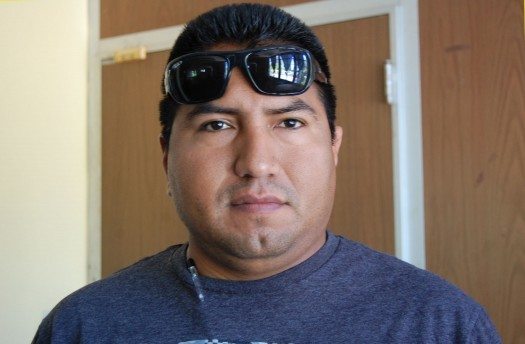

California wage earners received encouraging news Wednesday when Assembly Bill 2416 (Wage Theft Recovery Act) cleared a major hurdle by passing 44 to 27 on an Assembly floor vote — three votes more than needed to move to the Senate.
The measure, introduced in February by Mark Stone (D-Scotts Valley), is modeled after a successful Wisconsin wage lien law. It is designed to tie off loopholes in California that currently allow unscrupulous businesses to evade paying monetary judgments to thousands of shortchanged, mostly low-wage workers by simply transferring ownership or even by declaring bankruptcy.
According to a 2013 study by the National Employment Law Project and the UCLA Labor Center, of the 18,683 workers who filed claims for unpaid wages with the California Division of Labor Standards Enforcement (DLSE) between 2008 to 2011, only 3,084, or 17 percent, recovered any money at all.
In 60 percent of those rulings,
» Read more about: Proposed Wage Theft Law Passes Major Hurdle »
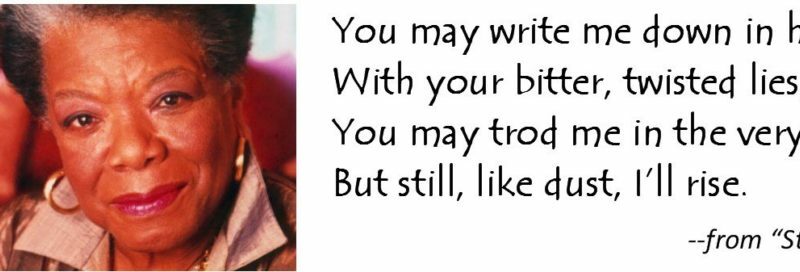



In the most recent Coen brothers film, Inside Llewyn Davis, the protagonist — a struggling Greenwich Village folksinger in 1961 — is based, very loosely, on Dave Van Ronk, a little-known (outside folk music circles) but influential folk-singer who helped define the folk music revival of the late fifties, and mentored the young Bob Dylan and others during the early 1960s when what Van Ronk called the “great folk scare” took off. To understand the atmosphere of that music scene, the Coens relied on Van Ronk’s memoir (coauthored with Elijah Wald), The Mayor of McDougall Street. Van Ronk recounts his serious involvement with various left-wing factions of the period.
Little of Inside Llewyn Davis refers to the political atmosphere that permeated the Greenwich Village folk scene of the early 1960s. The film is filled with despair and loneliness, but the folk music world of that period was filled with hope and engagement.
» Read more about: Protest Music Is Always Blowin’ in the Wind »


For those with Internet access, free online classes from Ivy League universities, taught by some of the world’s top professors, are just a click away. But to a grassroots coalition of organizations representing hundreds of thousands of college and university educators, there’s a reason this promise seems too good to be true.
The Campaign for the Future of Higher Education (CFHE), comprised of the California Faculty Association (a financial supporter of Capital & Main), the National Education Association, the California Community College Association and the American Federation of Teachers, along with dozens of other education and labor groups, is urging the public to not believe the hype. The CFHE is also asking the top three promoters of massive open online courses, commonly known as MOOCs, to tone down their claims and come clean about their main goal – to make a profit.
Online courses have been available since the1990s,


Under the deceptively bland headline, “House GOP Releases Ag Budget,” the center-right Politico website on Monday examined a proposed House Republican budget for agriculture and food safety programs. After noting that the bill would give a measly $3 million increase to efforts to regulate the derivatives market ($62 million less than the Commodity Futures Trading Commission requested), writer David Rogers reported that the GOP measure would make it easier for schools to adopt lower nutritional standards for their meal programs — and for starch bombs like white potatoes to be included as vegetables that are covered by a Women, Infants and Children supplemental feeding program.
Only way down, in the story’s fourth paragraph, did Rogers mention that, “in a surprising twist,” the House Republicans required that a pilot program to feed school children from low-income families during summer vacation be restricted to kids living in rural Appalachia. In other words,
» Read more about: House Conservatives Block Food to Needy City Kids »


The release of former Treasury Secretary Tim Geithner’s new book, Stress Test — his self-serving account of the Obama administration’s effort to address the nation’s economic crisis and mortgage meltdown — has triggered a great deal of controversy and debate. Was the Obama economic team too cozy with, or too sympathetic, to Wall Street? Was the stimulus package large enough? Did Geithner, Larry Summers and Ben Bernanke stifle the views of dissidents within the administration — especially Council of Economic Advisors chair Christina Romer and FDIC chair Sheila Bair (perhaps not surprisingly, both women) — who urged bolder approaches?
But on at least one issue, there is a growing consensus: The Obama administration did too little, too late, to help troubled homeowners, who faced plummeting home prices and the risk of foreclosure.
Obama’s closest advisors wrongly assumed that as the economy improved, Americans would be better able to buy homes and pay the mortgage on existing homes.
This week a DVD of The Abbott and Costello Show‘s 1953-54 season was released amid nostalgic fanfare. The old comedy team is mostly remembered today because of its immortal “Who’s on First” baseball routine – an almost Beckettian example of miscommunication that’s been enshrined in Cooperstown’s Hall of Fame. However, the two Jersey boys also enjoy an afterlife in conservative circles through a very similar sketch, “The Loafers Union,” in which straight man Bud Abbott proudly announces to sidekick Lou Costello that he has landed a “loafing” job at a bakery. From this spare description, fans of “Who’s on First” can pretty much guess the kind of linguistic linguine the two former Vaudevillians will make of this double entendre:
Abbott: I got a job at a bakery.
Costello: Good! What’re you doing there?
Abbott: Loafing.
Costello: Loafing?
Abbott: Loafing!
» Read more about: Abbott & Costello’s Vintage Union Bashing »


People who hate government get a lot of aid and comfort from America’s news media, which tend to give big business a party pass when it comes to incompetence and corruption. While any government agency – from Congress to your local school board – is fair game for attacks, business institutions usually come under an investigative spotlight only if the news story has already generated a lot of public heat.
For example, when the government released its report on Shell’s behavior in the Arctic, newspapers put it among the top news stories. Similarly, when the City of Los Angeles brought suits against a couple of the nation’s biggest banks for systematic lending abuses, this made the front section, although not the front page. Likewise, when an oil company paid $5.15 billion to clean up environmental contamination, it was big news.
For the not-so-big stories about corporate screw-ups,
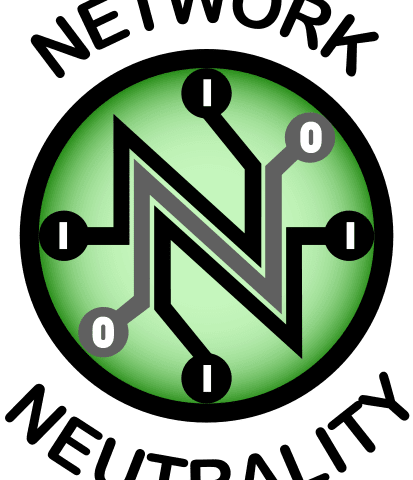

What you are about to read is about the FCC and “net neutrality.” But not really.
As you probably know, the Federal Communications Commission is in the process of revising its rules and regulations for the Internet. It’s tried twice before and both times the telecommunications industry has (successfully) gone to court to get the rules tossed out.
One of the hottest topics is net neutrality – the idea that your Internet service provider has to treat equally whatever content is flowing through its tubes. This is important, because without net neutrality your ISP could strike separate deals with different content providers, allowing, say, Hulu to flow freely, but letting Netflix drip through at a slower pace. Or loading the Drudge Report quickly, but throttling Left Business Observer.
A secondary effect of ending net neutrality concerns what you pay to Time Warner (or AT&T or Verizon or Comcast) —
» Read more about: Net Loss: Why One FCC Commissioner Hates His Job »